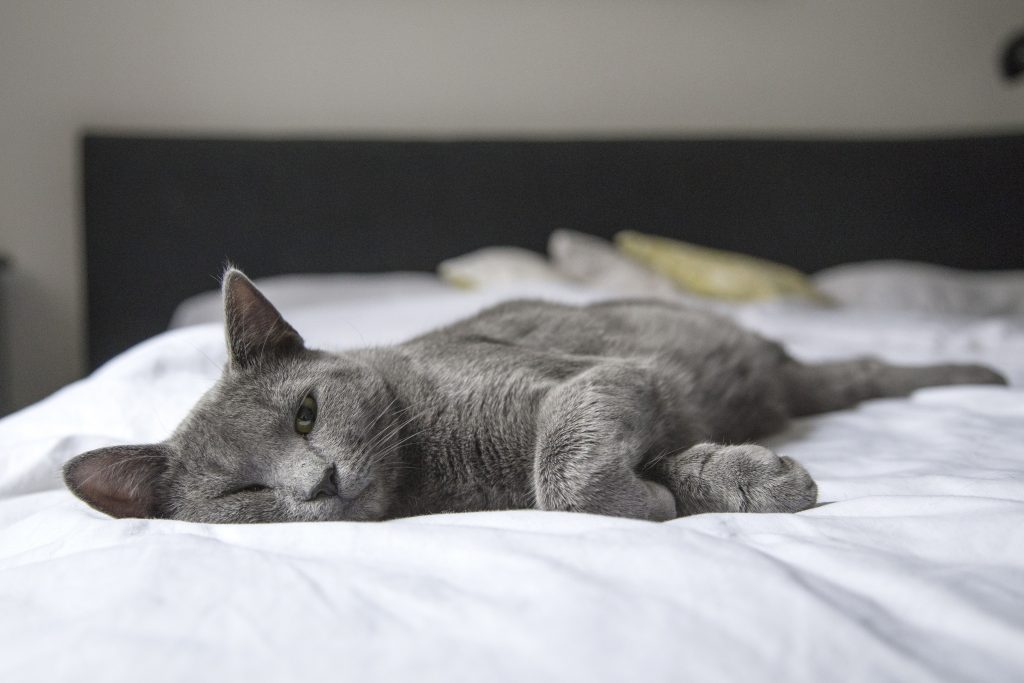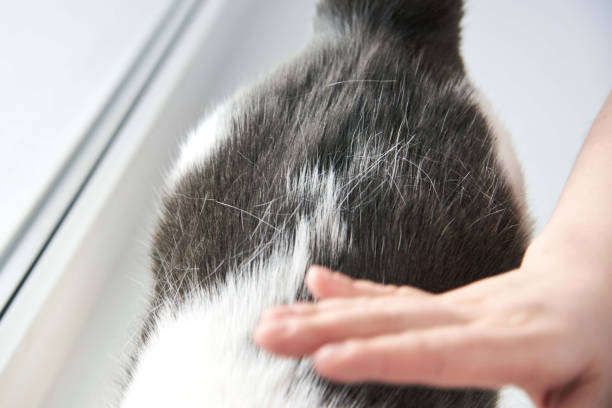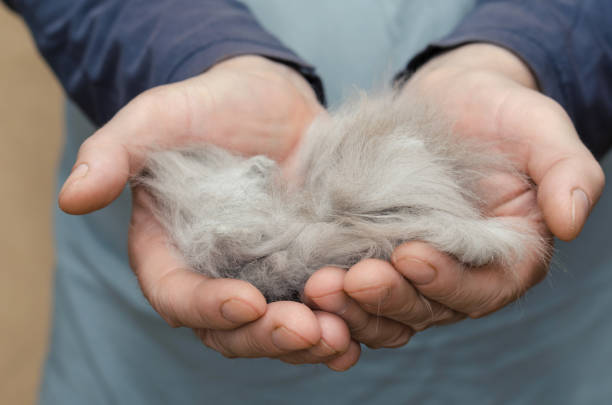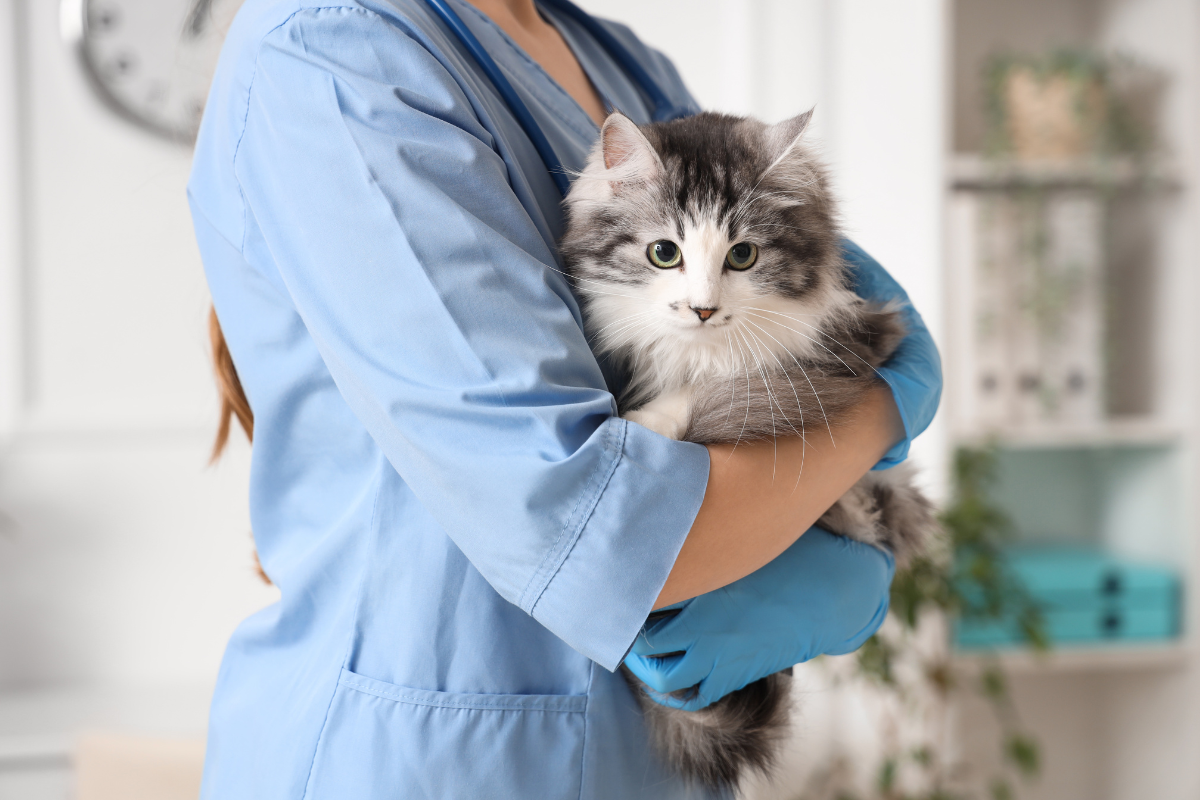Have you noticed that your cat sheds more hair than usual in spring? You sit down on the sofa and find traces of it, your clothes are covered in hairs, and it seems like you’re constantly brushing them out. Cat shedding is a natural process, but it can be a challenge for any household. The good news is that there are simple and effective tricks to keep your house cleaner and, at the same time, take care of your cat’s health. Stay tuned until the end, because you’ll discover the secret that makes the difference between a house full of hair… and one where you hardly notice it.

Why Do Cats Have Such Intense Shedding of Hair?
A cat’s fur acts as a natural coat. With the changing seasons, especially in spring and fall, their bodies react:
- In April, they shed their winter coat to prepare for a lighter coat.
- This shedding is regulated by sunlight and temperature, not just the calendar.
- Indoor cats also shed, although more consistently throughout the year due to heating and artificial light.
Key fact: A cat can lose between 10% and 30% of its fur during seasonal shedding.
Tips for Managing Your Cat’s Shedding
Regular brushing
Brushing is the best way to reduce the amount of loose hair in your home.
Frequency: daily for long-haired cats and at least 3 times a week for short-haired cats.
Tools:
| Type of cat | Recommended brush |
| Short hair | Rubber gloves or soft bristle brushes |
| Medium-length hair | Metal bristle brushes |
| Long hair | Double-sided combs and deshedders |
Brushing not only removes dead hair, it also improves circulation and strengthens the bond with your cat.
Proper nutrition
Healthy hair starts from within. A diet rich in high-quality protein, omega-3 and omega-6 fatty acids, biotin and zinc promotes a strong, shiny coat.
- Key ingredients: salmon, fresh chicken, fish oil, flaxseed.
- Foods such as Summit 10, formulated with fresh proteins and a complete and balanced nutritional profile, help reduce excessive shedding and improve skin and coat health.
- Specific supplements such as Summit 10’s DERMA+ provide an extra boost of essential nutrients to strengthen the skin barrier and mitigate hair loss.
Constant hydration
Dehydration dries out the skin and causes more hair loss.
- Place several bowls of fresh water around the house.
- Consider an automatic fountain: many cats drink more if the water is moving.
Clean and adapted environment
Loose hair doesn’t just stay on your cat: it also accumulates in your home.
- Use vacuum cleaners with HEPA filters.
- Wash their blankets and beds frequently.
- Provide scratching posts: when cats rub themselves, they naturally shed dead hair.
Hairball control
During shedding, cats ingest more hair when grooming themselves, which can cause hairballs (trichobezoars).
- Offer cat malt or fibre-rich snacks. Discover our Summit 10 HAIRBALL+ supplement, specifically formulated to lubricate ingested hair as it passes through the gastrointestinal tract, thereby preventing the formation of hairballs.
- A diet rich in fibre helps eliminate ingested hair naturally. Our Summit 10 recipes for cats are always enriched with a blend of soluble and insoluble fibres to promote the elimination of ingested hair throughout the gastrointestinal tract and thus prevent the formation of hairballs.
Veterinary check-up
If you notice bald patches, excessive hair loss, itching or wounds, do not ignore them. They could be a sign of:
- Allergies
- Stress
- Skin problems
- Parasites
Your vet is best placed to identify the cause and recommend treatment.

Home remedies for a hair-free home
- Lint rollers: quick and effective on clothing and sofas.
- Wet wipes for pets: trap loose hair and refresh their coat.
- Humidifier: improves air quality and prevents hair from floating around the house.
- Special blankets: place one on the sofa to collect most of the hair and wash it every week.
Summary table: what to do and what to avoid
| Do | Avoid |
| Brush daily | Allow hair to accumulate |
| Provide a diet rich in protein and omega-3 and omega-6 fatty acids. | Nutrient-poor diets |
| Keep the house clean and vacuumed | Use only the roller without brushing the cat. |
| Regular veterinary check-ups | Ignoring excessive hair loss |
FAQs about shedding in cats
Is it normal for my cat to shed so much hair in spring?
Yes, it’s completely normal. In April, cats shed their winter coats and grow lighter ones.
Can I bathe my cat to reduce shedding?
In some cases it may help, but it is not advisable to overuse the bath. Frequent brushing is more effective and less stressful.
Do supplements help control shedding?
Some supplements, such as Summit 10’s DERMA+, enriched with biotin, zinc and omega-3 fatty acids, can improve coat health and therefore reduce hair loss. However, always consult your vet before giving them to your pet.

Conclusion
Cat shedding their coats in April is a natural process, but with the right routine you can prevent your home from becoming covered in hair. Frequent brushing, a good diet, hydration and a clean environment are key. What’s more, taking care of your cat’s skin and coat not only keeps your home cleaner, it also improves your cat’s well-being.
At Summit 10, we are committed to providing complete, high-quality nutrition with fresh proteins and essential nutrients that help maintain a strong, healthy and shiny coat. Because a well-cared-for cat not only looks better, it is also happier.


